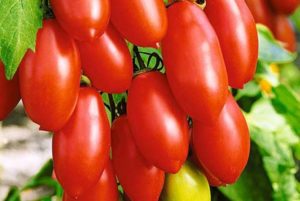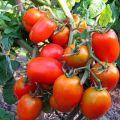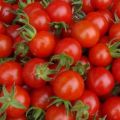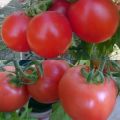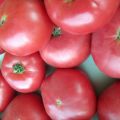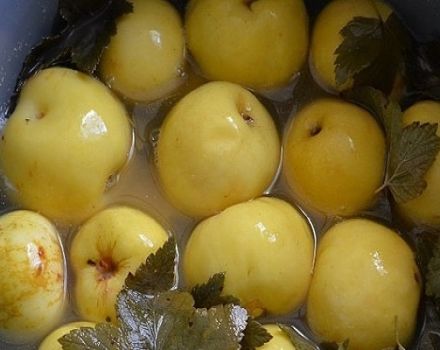Characteristics and description of the tomato variety Pink Stella, its yield
Many Siberian vegetables have a special character. Pink stele is an amazing tomato, combines several advantages, practically having no disadvantages. The amateur vegetable grower who has planted this variety at least once appreciates its high yield and unpretentiousness. Gardeners include the Rose Stella tomato on their top list for annual cultivation.
Selection star
Tomato Pink Stella was bred by the famous Novosibirsk breeders - T.N. Postnikova and V.N. Dederko. A creative team of like-minded scientists has created many popular modern varieties of tomatoes, but the Pink Stella has become one of the best. At first, the authors gave this tomato the name Super Pepper, and the tomato immediately earned the love of gardeners. For several years the agricultural firm "Siberian Garden" has been selling the variety under this name.
When the tomato has successfully passed the state tests, it is time to obtain a patent for it and include it in the State Seed Register. The word "supercharged" was considered too long and inconvenient. I had to change the name to Pink Stella. In 2006, the variety received a patent as an outstanding breeding achievement, and in 2007 it was included in the State Register. By the way, there he appears as a tomato "Pink Stele" with one "l".
In general, stele and stele are different words. Stele is a monument in the form of a high pillar, Stella is a woman's name, translated from Latin for "star". Bearing in mind the elongated shape of the fruits of the tomato variety we are interested in, it may be more appropriate to speak about the "stele". But, contrary to the State Register, the name "Stella" stuck and went into the people.
Rose stella (star) is a beautiful, sonorous name, surprisingly suitable for such a magnificent tomato variety.
Agrofirm "Siberian Garden" offers original seeds with the name "Pink Stella". Many amateur gardeners do not know about the renaming and continue to search in stores for the Superpepper tomato variety from the Siberian Garden company, which is now produced as the Pink Stella. Some seed companies sell Stella Rose tomatoes.
Varietal features
Detailed characteristics and description of the variety reveal a whole range of its remarkable advantages. They manifest themselves not only in Siberian soil. It is the largest early tomato and the earliest large.
Bush
Plants bear fruit well in open-air beds. They can be planted in greenhouses as a low sealant. The variety is extremely unpretentious, it succeeds in any weather. Not too picky about agricultural technology. May suffer from late blight.
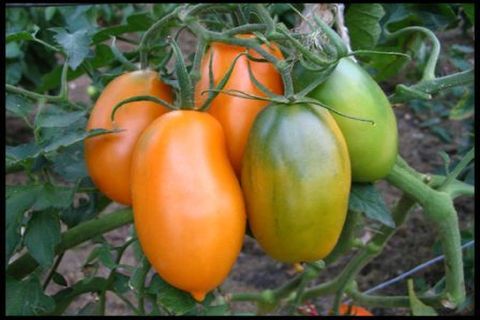
The leaves are large, dark green, sitting on thick, short petioles.The powerful leaf apparatus provides excellent photosynthesis and works excellently for the harvest.
The stem of a tomato grows to a height of about half a meter. At the beginning of the growing season, it is of the standard type, thick, stocky, erect, compressed, extremely compact, then it becomes slightly spreading. Due to the determinancy, this tomato stops growing on its own, tying several brushes. Early pinching (up to the first brush) accelerates ripening and increases yields. Further shaping is not required.
Fruiting
The ripening time of the tomato is medium early.
The clusters begin to form quite early - after the rapid growth of 7 - 8 leaves. Further, the ovaries are often located across the leaf, which ensures excellent yield. In each brush, 3 - 5 and even 7 tomatoes are successfully tied. The ovaries are rapidly increasing in size.
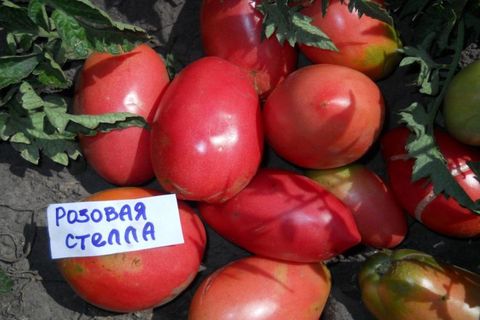
The weight of the Pink Stella fruit averages 130 - 150 grams. In the first brush, they are much larger - 250 - 350 grams (record even 400 - 500). On the upper clusters, the tomatoes in shape and size resemble the fruits of the Fighter variety (Buyan red) with a mass of 70 - 90 grams.
The shape of the tomatoes is oblong-pepper-shaped, narrowed downwards, often slightly pointed. The first, largest fruits are reniform or heart-shaped, slightly flattened from the sides.
The color is uniform, without a green spot at the stalk. The color is very beautiful, appetizing - light crimson or deep pink. The skin is not too tough. The pulp is pink, has an average density - moderately fleshy, moderately juicy. There are very few seeds and they are small. The taste of tomatoes is great - dessert, sweetish.
The yield of the variety is stable over the years. Pink stele bears fruit well in any summer, regardless of natural disasters. Tomato brushes knit successfully and grow quickly in a wide variety of weather conditions. The minimum return per square meter is 7 kilograms. Really get one and a half times more.
Appointment
Pink stella is the most unpretentious of sweet salad varieties... The tomato is ideal for natural consumption in fresh vegetable salads. The only drawback of the variety (inherent, however, to all delicious salad varieties) is the low keeping quality of ripe fruits. Green tomatoes ripen well, but they don't last long when ripe.
In terms of size and shape, the Pink Stella tomatoes from the upper brushes are quite suitable for pickling and pickling. True, due to the thin skin and delicate consistency of the pulp, when heated, the fruits often burst. The most successful will be canning tomato slices in gelatin - this is just for meaty varieties. Thick juice turns out to be tasty and sweet: if a large crop has grown, you cannot let it go bad. You can make "horseradish" ("gorloder") or boil ketchup, tomato paste.
Details of agricultural technology
No matter how unpretentious the variety is, the tomato fully reveals its potential only with good care. Pink stele, being large-fruited, is very responsive to many agricultural techniques.
Seedling period
In describing the Pink Stella tomatoes, it is necessary to mention a valuable feature: tomatoes are extremely compact in seedlings. Plants tolerate shading well, develop normally even on the northern and western windows of city apartments. Young seedlings behave in a similar way in the varieties Fighter (Buyan) red and Buyan yellow. The stems are stocky, with closely spaced internodes, broad foliage. Only the Pink Stella has larger, slightly curly leaves.
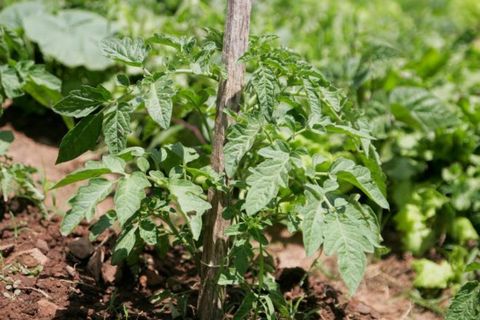
The tops of the seedlings are slightly stretched and thinned only with strong thickening, so you should not be late with the pick. It is carried out after the growth of one or two true leaves. Extreme heat can also trigger abnormal growth. There is no need to overfeed the seedlings, you can do without feeding at all.
A common mistake of novice gardeners is too early sowing of the seeds of the Pink Stella. In the case of this variety, overgrown seedlings are much worse than undergrown seedlings. The age of plants when transferred to the ground should not exceed 50 days. Thus, the seeds must be sown two months before planting. If you first place the plants under shelters, then the approximate date of planting in the conditions of the Central strip and Siberia is mid or late May. This means that sowing is done on March 15 - 20.
When disembarking directly into open ground (June 10 - 20), they sow even later - in mid-April.
In the ground
Two circumstances play a decisive role in the care of the Pink Stella variety. It must be remembered that this is a determinant and large-fruited variety:
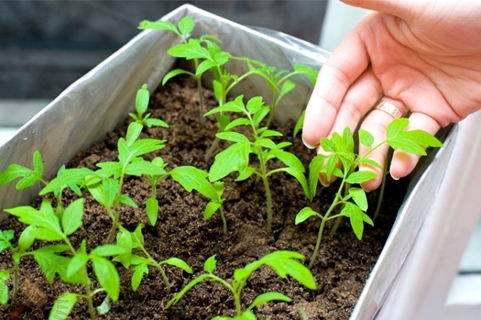
- 4 - 5 bushes are placed on one square meter of the bed.
- A garter of plants is required, otherwise the tomatoes will fall or break under the weight of weighty fruits. Each brush does not need to be tied, it is strong enough.
- It is highly desirable to carry out pinching below the first brush. This will speed up the fruit filling and ripening, increase the size of the tomatoes and the overall yield. Extra shoots, crawling out of the ground, and all lateral branches growing from the leaf sinuses below the first ovary are removed.
- It is not necessary to pinch above the first brush.
- There is no need for edging (removing the growth point) in August. The bushes complete their growth by themselves.
- Top dressing and watering of tomatoes is carried out as usual.
- It is important to observe crop rotation, to take protective measures against late blight.
Pink stella is not a hybrid, but a variety, so you can leave the fruits from the best bushes for seeds. For this, it is recommended to choose healthy tomatoes with typical varietal characteristics, preferably from the second hand.
The experience of amateur vegetable growers
Good reviews from all over the country speak of the exceptional ecological plasticity of the Siberian variety.
Olga Markina (Myski, Kemerovo Region): “For me, the Pink Stele is number one tomatoes. I have been planting them for several years. I noticed only one drawback: they are not stored for a long time. But the tomatoes are so tasty that we eat them quickly, because the family is big. "
Yu.P. Vershinin (Vershinino village, Tomsk region): “Our places are cold, around the taiga. Not all tomatoes work well. I tried many varieties, subscribed from all over the country. Only the earliest varieties blushed on the vine, but I did not like their taste. And the Pink Stella conquered in the first year. I bought the seeds of this tomato in the store, I was tempted to describe. It turned out that the truth was written on the pack, which is a rarity these days. In July, it rained, but this did not interfere with the harvest. "
The Gurevich family (Chekhov, Moscow region): “We recently moved to the Moscow region from Siberia and brought with us the seeds of our favorite pink tomatoes. The pink stele is the kind of tomato that will probably produce anywhere. "
Goncharenko Yulia Andreevna (Chelyabinsk): “At first, the neighbors grew the Pink Stella. I was fond of our Ural varieties. But in the cold summer they let me down, and the neighbors' tomatoes were at their best. I bought a Pink Stella tomato for seeds from them and for three years now I have been collecting enough for both myself and for sale. "
Many gardeners note that it is beneficial to grow the Pink Stella for the tomato seedlings trade. The stocky, profusely flowering bushes are sold out very willingly.
